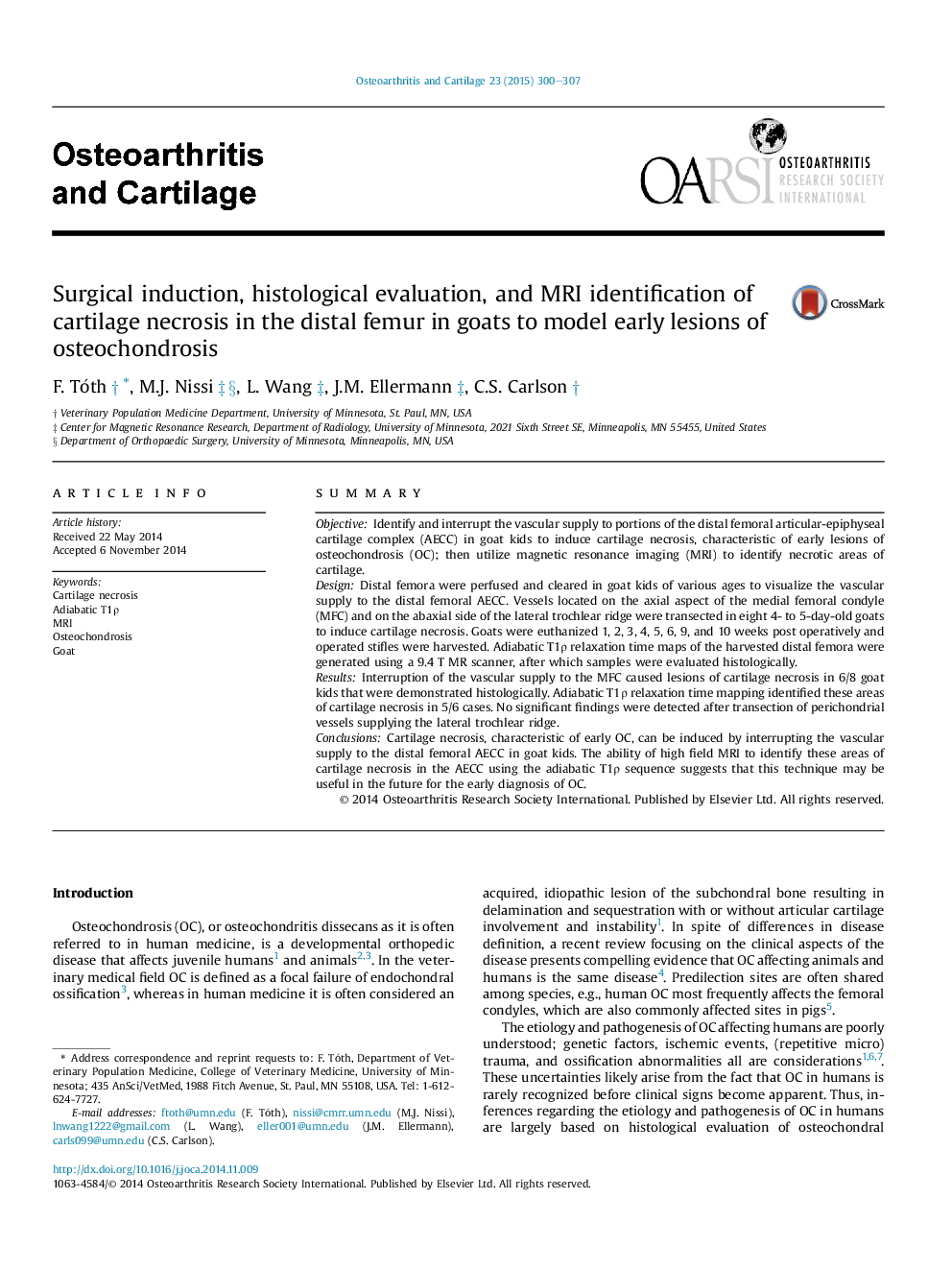| Article ID | Journal | Published Year | Pages | File Type |
|---|---|---|---|---|
| 3379199 | Osteoarthritis and Cartilage | 2015 | 8 Pages |
SummaryObjectiveIdentify and interrupt the vascular supply to portions of the distal femoral articular-epiphyseal cartilage complex (AECC) in goat kids to induce cartilage necrosis, characteristic of early lesions of osteochondrosis (OC); then utilize magnetic resonance imaging (MRI) to identify necrotic areas of cartilage.DesignDistal femora were perfused and cleared in goat kids of various ages to visualize the vascular supply to the distal femoral AECC. Vessels located on the axial aspect of the medial femoral condyle (MFC) and on the abaxial side of the lateral trochlear ridge were transected in eight 4- to 5-day-old goats to induce cartilage necrosis. Goats were euthanized 1, 2, 3, 4, 5, 6, 9, and 10 weeks post operatively and operated stifles were harvested. Adiabatic T1ρ relaxation time maps of the harvested distal femora were generated using a 9.4 T MR scanner, after which samples were evaluated histologically.ResultsInterruption of the vascular supply to the MFC caused lesions of cartilage necrosis in 6/8 goat kids that were demonstrated histologically. Adiabatic T1ρ relaxation time mapping identified these areas of cartilage necrosis in 5/6 cases. No significant findings were detected after transection of perichondrial vessels supplying the lateral trochlear ridge.ConclusionsCartilage necrosis, characteristic of early OC, can be induced by interrupting the vascular supply to the distal femoral AECC in goat kids. The ability of high field MRI to identify these areas of cartilage necrosis in the AECC using the adiabatic T1ρ sequence suggests that this technique may be useful in the future for the early diagnosis of OC.
